Learn to recognize five key aspects of excessive information gathering.
Understanding Reassurance-Seeking
Have you ever found yourself asking, “Are you sure?” over and over, googling symptoms late at night, or checking the door lock repeatedly to feel a little better? If so, you’ve experienced reassurance-seeking. This common habit is the brain’s way of trying to reduce anxiety and gain a sense of control, but it can quickly spiral into a cycle that makes you feel worse.
Reassurance-seeking is a behavior we use to calm our doubts, fears, and uncertainties. It can resemble asking others for their opinions, searching the internet for answers, or even replaying events in your mind to convince yourself that everything is okay. While a little information gathering is normal and healthy, excessive reassurance-seeking can become a self-reinforcing habit with negative emotional consequences. Reassurance-seeking behavior can range from double-checking locks to repeatedly asking loved ones for affirmation, and is often driven by a desire to reduce uncertainty.
Compulsive reassurance seeking is a pattern where individuals repeatedly ask for confirmation or validation to ease their anxiety, often without finding lasting relief. Let’s explore the neuroscience behind reassurance-seeking, how it takes hold, and what you can do to break free from its grip.

The Neuroscience Behind Reassurance-Seeking
How the Brain Responds to Uncertainty
Our brains are remarkable survival machines, finely tuned through evolution to keep us safe in an unpredictable world. At the heart of this system is the amygdala—a tiny, almond-shaped cluster of neurons deep in the brain. Please think of the amygdala as your internal alarm system: it constantly scans for threats and, when it senses uncertainty or potential danger, it sounds the alarm by triggering feelings of anxiety, worry, or even dread.
But the amygdala doesn’t work alone. When uncertainty strikes, your prefrontal cortex—the brain’s “CEO” in charge of reasoning, decision-making, and planning—jumps into action. The prefrontal cortex tries to make sense of the situation, weighing risks and searching for solutions. It’s this part of the brain that drives you to gather information, double-check facts, or ask for reassurance, all to regain a sense of control.
This interplay between the amygdala and prefrontal cortex is a natural, protective response. In moderation, reassurance-seeking is adaptive: it helps us prepare for challenges, make informed choices, and avoid real dangers. For example, double-checking you’ve locked the door or asking a doctor about a new symptom can be wise and responsible actions.
However, the brain’s powerful need for certainty can sometimes backfire. When anxiety is high or uncertainty feels overwhelming, the amygdala’s alarm keeps blaring, and the prefrontal cortex becomes stuck in overdrive. You may find yourself compulsively seeking reassurance—not just once, but repeatedly—hoping to alleviate the discomfort. Each time you receive reassurance, your brain rewards you with a small surge of dopamine, the neurotransmitter that signals pleasure and relief. This dopamine “hit” feels good in the moment and provides brief relief from anxiety.
But here’s where the neuroscience gets fascinating—and tricky. Like any habit that brings relief, the brain quickly learns to crave the dopamine rush that comes from reassurance. The more often you seek reassurance, the more your brain wires this behavior into its circuitry. Over time, you become conditioned to reach for reassurance whenever uncertainty arises, even if the situation doesn’t truly warrant it.
This pattern can create a self-reinforcing cycle of reassurance seeking behavior:
- Uncertainty triggers anxiety (amygdala fires up)
- You seek reassurance (prefrontal cortex problem-solves)
- Reassurance brings temporary relief (dopamine is released)
- Relief fades, anxiety returns, and the cycle repeats
Eventually, the brain’s threshold for uncertainty drops, meaning even minor doubts can set off the alarm and trigger reassurance-seeking. What started as a helpful coping mechanism can spiral into a compulsive habit, where the quest for certainty increases anxiety and makes you feel less confident in your judgment.
Neuroscientists have found that this loop is powerful in people who have experienced chronic stress, trauma, or who are naturally more sensitive to uncertainty. The more you rely on reassurance, the less your brain learns to tolerate not knowing, and the more you become trapped in the cycle.
Understanding this brain-based process is empowering. It means that reassurance-seeking isn’t a sign of weakness or irrationality—it’s a learned response, deeply rooted in your brain’s wiring. And because the brain is capable of change (thanks to neuroplasticity), you can retrain it to handle uncertainty in healthier, more resilient ways.

The Habit Loop of Reassurance-Seeking
Neuroscience reveals that habits are formed through a loop: a trigger (such as anxiety), a behavior (reassurance-seeking), and a reward (relief). Over time, this loop becomes stronger. The more you seek reassurance, the more your brain expects it, and the more difficult it becomes to stop.
Research also suggests that people who struggle with low self-esteem, loneliness, or negative thinking are more likely to develop excessive reassurance-seeking habits. This is especially true for those with anxiety disorders or obsessive-compulsive disorder (OCD), where reassurance-seeking can become a central coping mechanism.
Five Key Signs of Compulsive Reassurance-Seeking
How do you know when reassurance-seeking has crossed the line? Here are five signs to watch for:
1. Driven by Emotional Urgency
The main goal of reassurance-seeking is to soothe distressing urges. When anxiety or doubt spikes, you feel a powerful need to get answers—fast. This urgency is a sign that your brain is seeking relief, not just information. Seeking reassurance from others is a common coping mechanism, but it can quickly become an unhealthy dependency if not addressed.
2. Repetitive and Redundant Behavior
Constructive information gathering is efficient: you ask, you learn, you move on. Compulsive reassurance-seeking is different. You might ask the same question many times, check the same facts, or revisit the same websites. The relief you get is short-lived, so you continue to repeat the behavior.
3. Focus on Minor Details
Instead of looking at the big picture, reassurance-seeking zooms in on tiny details. For example, you might not just ask if the door is locked, but also want to know exactly how it was locked, who locked it, and if it remains locked now. These granular questions rarely add real value—they prolong the search for certainty.
4. Chasing the Unknowable
Sometimes, the answers you seek don’t exist. You may want to know for certain that nothing bad will happen in the future, but no amount of reassurance can guarantee this. When you find yourself searching for answers to impossible questions, it’s a sign the habit has taken over.
5. Overvaluing Secondhand Information
When you can’t get a direct answer, you might look for clues or estimates—asking others for their opinions, reading online forums, or comparing your situation to someone else’s. This “second-degree” information rarely satisfies and can exacerbate uncertainty, making it feel even worse.

Why Reassurance-Seeking Feels Good—But Doesn’t Work
Every time you seek and receive reassurance, your brain experiences a brief but powerful reward. The release of dopamine drives this reward, a neurotransmitter often referred to as the brain’s “feel-good” chemical. Dopamine creates a fleeting sense of calm and relief, which feels comforting in moments of anxiety or doubt. However, this relief is only temporary and fades quickly, leaving your brain craving another dose of reassurance to soothe the returning discomfort.
This cycle of reassurance-seeking and dopamine-driven relief can become deeply ingrained, turning into a self-reinforcing habit. Neuroscientific research suggests that repeated dopamine release strengthens the neural pathways associated with reassurance-seeking, making the behavior more automatic and less susceptible to influence over time. Instead of reducing anxiety, this loop paradoxically increases it, as the brain becomes more dependent on external validation to feel safe.
Over time, this habit can weaken your brain’s natural ability to tolerate uncertainty. The prefrontal cortex, which is responsible for rational thinking and emotional regulation, becomes less effective at managing anxiety without reassurance. As a result, your brain becomes hypersensitive to uncertainty, triggering stronger emotional responses and more frequent reassurance-seeking urges.
Studies in neuroplasticity reveal that the brain’s wiring is not fixed; it can be reshaped through new experiences and the formation of new habits. The more you practice seeking reassurance, the more your brain expects it as a solution to discomfort. However, by gradually reducing your reliance on reassurance and building tolerance for uncertainty, you can retrain your brain to find calm and confidence within yourself.
In summary, while reassurance-seeking offers short-term relief through dopamine-driven rewards, it undermines long-term emotional resilience and self-trust. Breaking free from this cycle requires awareness, patience, and strategies that support your brain’s natural capacity for change and growth. By understanding the neuroscience behind reassurance-seeking, you empower yourself to build true confidence, one step at a time.
The Emotional Roots of Reassurance-Seeking
Every time you seek and receive reassurance, your brain releases a brief but powerful reward. This moment of relief is fueled by the release of dopamine, a neurotransmitter often referred to as the brain’s “feel-good” chemical. Dopamine delivers a quick hit of calm and comfort, soothing your worries and making you feel safe, at least for a moment. It’s like a mental sigh of relief after a tense buildup of anxiety or doubt.
But here’s the catch: this sense of comfort is fleeting. As soon as the dopamine surge fades, the old worries and uncertainties creep back in, often stronger than before. Your brain, now primed to expect relief from reassurance, starts to crave another dose. This sets up a powerful feedback loop: the more you seek reassurance, the more your brain depends on it to manage anxiety, and the harder it becomes to break the habit.
Neuroscientific research has shown that this cycle of reassurance-seeking and dopamine-driven relief can rewire your brain. Each time you repeat the behavior, the neural pathways involved become stronger, making the urge to seek reassurance more automatic and difficult to resist. What starts as a coping strategy for occasional anxiety can quickly become a deeply ingrained habit, one that paradoxically amplifies your anxiety over time. Instead of building confidence, your brain learns to rely on external validation, leaving you feeling less secure in your judgment. Reassurance seeking safety behaviour is a short-term strategy the brain uses to feel safe, but it often reinforces long-term anxiety.
As this pattern continues, your brain’s natural ability to tolerate uncertainty weakens. The prefrontal cortex—the region responsible for rational thinking, planning, and emotional regulation—becomes less effective at calming the amygdala’s alarm signals without the crutch of reassurance. This means even small doubts or ambiguous situations can trigger strong emotional reactions and an almost irresistible urge to seek reassurance, trapping you in a cycle of dependency.
Fortunately, neuroscience also offers hope. Studies on neuroplasticity reveal that your brain’s wiring isn’t set in stone; it can adapt and change in response to new experiences and intentional practice. By gradually reducing your reliance on reassurance and learning to sit with uncertainty, you can retrain your brain to manage discomfort more effectively. Over time, this builds genuine emotional resilience and self-trust, enabling you to find calm and confidence within rather than always relying on external sources.
In summary, while reassurance-seeking provides short-term comfort through dopamine-driven rewards, it can erode your long-term ability to handle uncertainty and trust your instincts. Breaking free from this cycle requires self-awareness, patience, and strategies that nurture your brain’s natural capacity for growth. By understanding the neuroscience behind reassurance-seeking, you empower yourself to build genuine confidence, one mindful step at a time.

The Social Side of Reassurance-Seeking
Reassurance-seeking doesn’t just affect your inner world—it can shape the dynamics of your closest relationships in surprising ways. When you frequently ask for reassurance from friends, family, or a partner, it often begins as a simple request for comfort or clarity. Over time, though, these repeated requests can create an emotional strain. Loved ones may feel pressured to provide constant validation, which can lead to frustration, misunderstandings, or even emotional distance.
Neuroscience helps explain why this happens. Our brains are wired for social connection and safety. The same neural networks that process physical pain also process social pain—so when reassurance is withheld or met with impatience, it can feel deeply distressing, almost like a physical hurt. This can reinforce anxiety and drive you to seek even more reassurance, creating a feedback loop that’s tough to break.
At the same time, the people you turn to for reassurance may become emotionally fatigued. Providing ongoing comfort can feel like hard work, especially if they worry that their answers never seem to be “enough.” This can disrupt the natural balance of give-and-take in relationships, making interactions feel more like emotional labor than genuine support. Constant reassurance seeking may seem harmless at first, but over time, it can erode self-confidence and strain relationships.
It’s essential to remember: reassurance-seeking is not a character flaw or a sign of weakness. It’s a learned response, shaped by your brain’s natural drive to reduce anxiety and past experiences that may have heightened your sensitivity to uncertainty or rejection. The amygdala, your brain’s alarm system, can become overactive in these moments, while the prefrontal cortex, responsible for emotional regulation, may struggle to restore balance under stress.
Recognizing these patterns opens the door to compassion, both for yourself and for those around you. By understanding the neuroscience behind reassurance-seeking, you can begin to communicate your needs more openly and work toward healthier, more balanced relationships. Building emotional intelligence and resilience not only helps reduce the urge for constant reassurance but also strengthens trust and connection with your loved ones.
Excessive reassurance seeking in relationships can lead to frustration, emotional exhaustion, and a decline in trust between partners. In short, while reassurance-seeking can strain relationships, understanding its roots empowers you to foster empathy, improve communication, and build stronger, more supportive bonds.

Reassurance-Seeking in OCD
Reassurance seeking in OCD is recognized as a compulsion, where individuals repeatedly ask for confirmation to neutralize obsessive fears and doubts. This behavior can involve asking loved ones for repeated validation, searching online for certainty, or mentally reviewing situations to ensure nothing was missed. While reassurance may provide brief relief, it ultimately reinforces the cycle of obsession and compulsion, making intrusive thoughts more persistent over time. Understanding this pattern is crucial for effective OCD management, as breaking the reassurance-seeking habit is a key step toward long-term recovery.
Breaking the Cycle: Science-Backed Strategies
Learning how to respond to reassurance-seeking—both in yourself and others—can help break the cycle and foster greater emotional independence. The good news is that you can retrain your brain and break the cycle of reassurance-seeking. Here’s how:
Build Mindful Awareness
Start by noticing your emotional state when you feel the urge to seek reassurance. Are you anxious, impatient, or just seeking comfort? Naming your feelings activates the prefrontal cortex, which helps calm the amygdala and gives you more control over your actions.
Limit Your Questions to the Knowable
Before you ask or search, pause and ask yourself: Is this something I can know for sure? Am I repeating questions or focusing on minor details? Stick to seeking new, factual information—avoid looping through the same queries or chasing answers that can’t be found.
Focus on Support, Not Reassurance
Instead of asking for repeated confirmation (“Are you sure I’ll be okay?”), Share how you’re feeling. Tell a friend, “I’m feeling anxious—can we talk or do something together?” Emotional support helps soothe the brain’s alarm system without feeding the reassurance habit.
Practice Tolerating Uncertainty
Uncertainty is uncomfortable, but it’s a normal part of life. Try sitting with the discomfort for a few minutes before seeking reassurance. Over time, your brain will learn that you can handle uncertainty without needing constant answers.
Celebrate Small Wins
Every time you resist the urge to seek reassurance, you’re rewiring your brain. Celebrate these moments—they’re proof that change is happening, even if it feels hard at first.

When to Seek Professional Support
For some, reassurance-seeking is a mild habit that can be managed with self-awareness and support. For others, especially when it’s linked to anxiety disorders or OCD, professional guidance is key. A neuroscience-based coach or mental health professional can help you understand your brain’s patterns and develop personalized strategies for lasting change.
Final Thoughts: Building True Confidence
Reassurance-seeking is a natural response to uncertainty, but when it becomes compulsive, it can trap you in a cycle of anxiety and doubt. By understanding the neuroscience behind this habit, you can start to break free, building confidence, resilience, and a healthier relationship with your mind.
If you’re struggling to manage reassurance-seeking on your own, know that support is available to help. With the right tools and insights, you can retrain your brain and reclaim your peace of mind.
#reassuranceseeking #neuroscience #mentalhealth #anxiety #habits #brainhealth #selfcare #wellness #mindfulness #emotionalhealth #stressmanagement #behaviorchange #selfawareness #resilience #mentalwellness #psychology #mindset #personaldevelopment #copingstrategies #neuroplasticity




